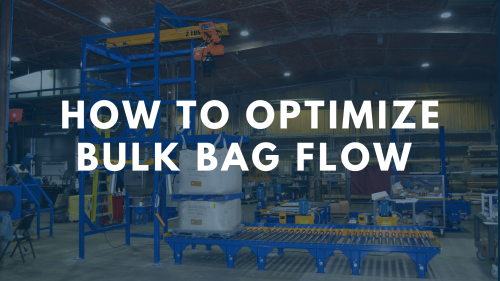Not all bulk materials behave the same. Sticky powders, fine granules, and moisture-sensitive products often cause flow issues during unloading. If you've experienced bridging, rat-holing, or inconsistent discharge, your system may need enhancements to improve flow.
Here's how to design or retrofit your unloader to handle difficult materials more effectively.
1. Use Bag Agitators or Massagers
When flow stops, the problem often starts inside the bag. Bag agitation paddles apply gentle, cyclical pressure to the lower portion of the bag, helping break up clumps and promote consistent flow. Pneumatic bag massagers are ideal for powders that compact during storage or transit.
2. Upgrade Hopper Geometry and Surface Treatments
A poorly designed hopper can exacerbate flow problems. For cohesive materials:
-
Increase hopper wall angle (typically above 60°)
-
Use polished or coated interior surfaces (e.g., Teflon-lined)
-
Avoid dead zones and flat-bottom designs
3. Add Spout Tensioners and Flow Control Valves
Stretching the bag spout vertically ensures a clear material path and prevents sagging or blockage. For better control, consider iris valves or slide gates at the discharge point to regulate flow.
4. Install a Bulk Bag Conditioner (If Needed)
If materials arrive hardened or compacted, a bulk bag conditioner can pre-crack and loosen contents before the bag is ever mounted. This is especially helpful for materials like magnesium sulfate, cement, or powdered dairy.
The ETSI Solution
ETSI systems are built with flow optimization in mind. From agitators to customized hopper geometry and preconditioning options, we help you maintain throughput and minimize manual intervention.
Contact ETSI to troubleshoot your flow challenges

